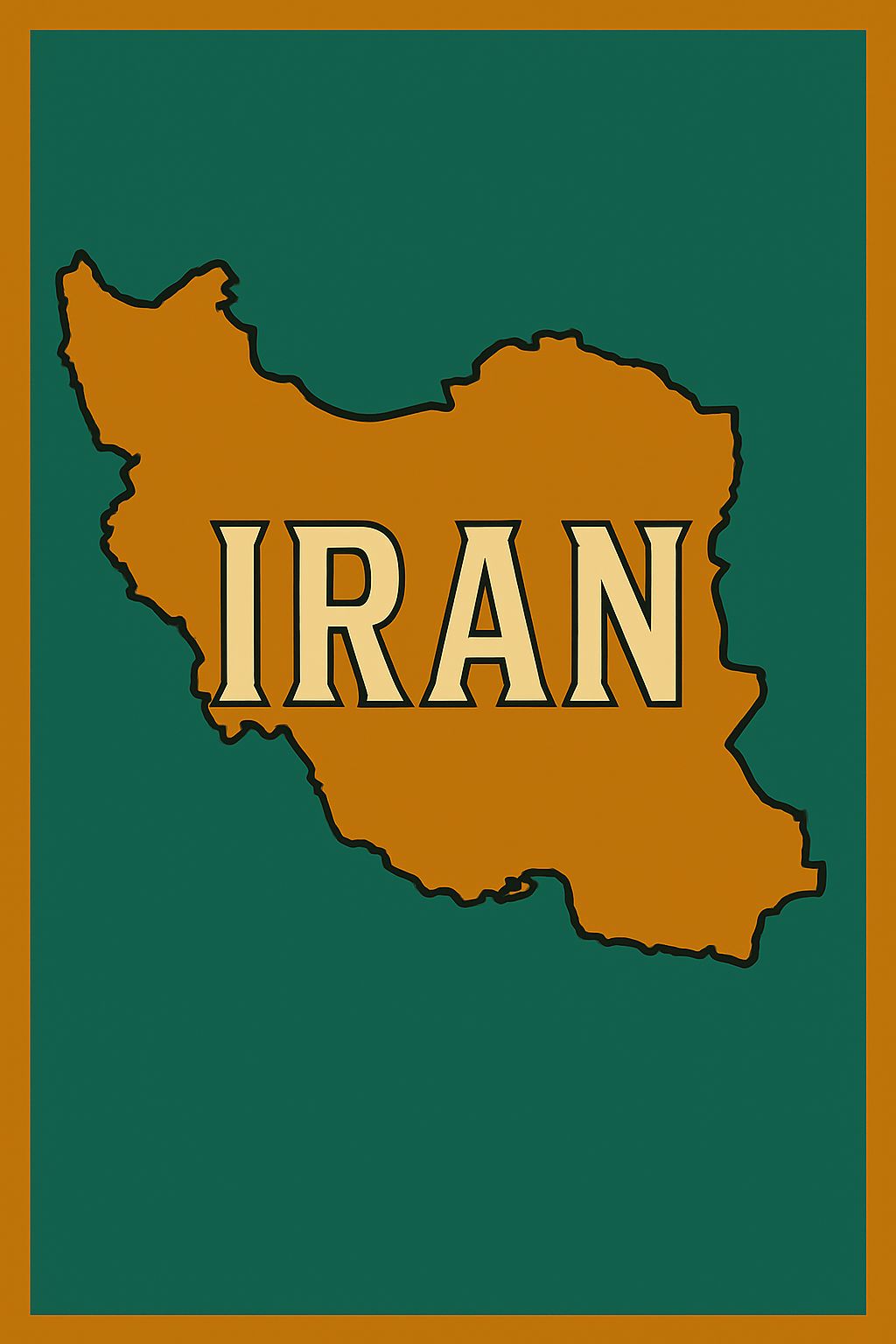Real News for Real People — Not Partisans
Feeling like you want to get off the rollercoaster of polarizing politics? Read Tangle — an independent and nonpartisan political newsletter recently profiled on This American Life for helping to bridge the gap between politically divided families. Each day, the newsletter unpacks one important news story, examining it from all sides of the political spectrum.

Bottom Line Up Front
The Natanz revelation in 2002 ended Iran’s post-revolution thaw, triggering decades of nuclear brinkmanship and crippling sanctions that hardened Tehran’s pursuit of deterrence through ambiguity.
Iran built a deniable alliance of proxies known as the “Axis of Resistance.” The goal was bleeding U.S. power and challenging Israel while mastering asymmetric warfare from Lebanon to Yemen.
Cyberwarfare entered the battlefield with Stuxnet in 2010, marking the first code-to-kill operation and unleashing a global era of state-sponsored digital sabotage.
The 2015 Iran nuclear deal briefly de-escalated tensions, but Trump’s 2018 withdrawal reignited enrichment, covert attacks, and tanker wars.
2024-25 marks a historic shift: an open war between both Israel and Iran. Though a tenuous ceasefire has been reached this peace is anything but durable.
Hey everyone—
Welcome to The Under Report, your weekly intelligence brief about the stories that move the world without making headlines. Today we've got part 2 of our series on Iran's History with the West. The first part took us from Operation AJAX in 1953 to the Iran Iraq War. Give it a read if you want to catch up.
If you like what we're doing here make sure to share the Under Report and engage with our sponsors. Your support keeps independent journalism alive.
— Eric
P.S. Check out my recent appearance on the Julian Dorey Podcast.
6. Natanz, Nukes, and a New Red Line (2002–05)
In the late 1990s and early 2000s, under President Mohammad Khatami, Iran flirted with reform. The so-called “dialogue of civilizations” took root, Western journalists were welcomed, and student protests suggested a cultural thaw. Iran showed the potential to westernize on its own terms and hope soared for global reintegration.
But in August 2002, exiled dissidents from the National Council of Resistance revealed Natanz, a clandestine uranium-enrichment site. Iran was developing nuclear capabilities. The discovery hit just as the U.S. entered the Global War on Terror. Asymmetric warfare combined with nuclear capabilities haunted strategists in Washington. The International Atomic Energy Agency (IAEA) initiated inspections, and President Bush branded Iran part of the “Axis of Evil.” Washington reimposed sweeping sanctions.
The regime’s response was surgical: pursue atomic ambiguity. Iran didn’t need a bomb for bargaining power, they needed the potential to get one. The most effective target for an atomic explosion is in the mind of the adversary and the idea of a nuclear Tehran turned the dialogue of civilizations into an icy silence. Thus began two decades of brinkmanship. Iranian citizens bore the brunt of a restrictive regime while the west wondered how long it would take until Tehran tested a nuke.
7. Building the “Axis of Resistance” (2006–09)
Facing overwhelming U.S. military power in the 2000s, Iran pivoted to a strategy it could afford: asymmetric warfare. Rather than confront adversaries directly, Tehran empowered a constellation of foreign militias to wage proxy conflicts across the region.
The 2006 war between Hezbollah and Israel marked a turning point. A smaller force could bleed a regional competitor if it was supported with training, weapons, and intelligence. Hezbollah launched more than 4,000 rockets into northern Israel, fought Israeli ground forces to a draw, and emerged politically emboldened. It was a strategic success for Tehran: a non-state actor had bloodied a U.S.-backed conventional military.
At the same time in Iraq, Iran’s Quds Force supplied Shia militias with training, funding, and weapons. The battlefield in Iraq fragmented into a patchwork of proxy engagements where attribution was murky and escalation was manageable. It's important to note that the powers structure built by Iran within Iraq still remains until this day.
This growing alliance of non-state actors which includes Hezbollah in Lebanon, Kata’ib Hezbollah in Iraq, the Houthis in Yemen, and pro-Assad militias in Syria came to be known as the “Axis of Resistance.” You can think of it as Tehran’s shadow NATO: decentralized, deniable, and united by opposition to Western power.
These groups entrenched power through projected violence but internal stability. Hezbollah provided services while the Shia militias helped repel sectarian violence. In Iraq and Lebanon, some proxies gained parliamentary seats. In Yemen and Syria, they took territory and even collected trash. Iran’s influence was becoming institutional as it provided a stable counterpoint to the growing chaos of the Global War on Terror.
8. Stuxnet and the Cyber Ground Shift (2010–13)
2010 marked a turning point in Iran's conflict with the west and an evolution in digital capabilities. Stuxnet, a digital weapon believed to be a U.S.–Israeli operation, silently sabotaged Natanz centrifuges. The virus destroyed one-fifth of the centrifuges via malware-induced self-destruction. This was the first code-to-kill attack on physical infrastructure, a capability which continues to advance to this day.
Iran responded with a digital attack of its own. Hackers hit U.S. banks, and the oil company Aramco was paralyzed in 2012. Proxy warfare had entered the digital domain, complicating attribution. Still, Iran’s nuclear program survived becoming more opaque than ever.
9. The JCPOA Hope and Collapse (2015–18)
By 2015, the standoff over Iran’s nuclear program had become a grinding war of attrition. Israel urged action against a notional bomb while the US reconsidered its approach to conflict in the Middle East. Sanctions were bleeding Iran’s economy. Israeli and Western intelligence services waged covert sabotage campaigns and eliminated nuclear scientists, but the Iranian nuclear program remained a black box. Without any reliable information, the West had to assume the worst.
Enter the Joint Comprehensive Plan of Action (JCPOA): a multilateral deal between Iran, the U.S., the EU, China, and Russia. Iran agreed to suspend most of its centrifuges, cap uranium enrichment at 3.67%, dilute or ship out 97% of its nuclear stockpile, and open its facilities to rigorous inspections. In exchange, it gained access to tens of billions in frozen assets and rejoined global markets. Oil exports soared. Inflation fell. Diplomats hailed it as a rare win for arms control.
But the deal never enjoyed bipartisan support in Washington. From the right Obama's deal was seen as soft on an autocratic regime which posed an existential threat to regional allies. So in 2018, President Trump unilaterally withdrew. This was done in spite of Iran’s compliance and sanctions were reimposed under a “maximum pressure” campaign. The U.S. expected Tehran to crawl back for a tougher agreement. Instead, Iran restarted enrichment, attacked oil tankers in the Gulf, and allegedly struck Saudi Aramco with drones. The message was clear: coercion without diplomacy had consequences.
10. The Soleimani Moment (2020)
A cycle of renewed violence was kickstarted. On January 3, 2020, the United States killed Maj. Gen. Qassem Soleimani in a drone strike outside Baghdad International Airport. It was a seismic move. Soleimani was Iran’s chief architect of regional influence, the man who built the “Axis of Resistance” and coordinated Tehran’s military posture from Beirut to Basra.
Iran’s response was calculated but unprecedented. Days later, the IRGC fired over a dozen ballistic missiles at U.S. forces stationed in Iraq. Though no Americans were killed, more than 100 were injured. This was a gesture to show that US bases could be touched at any time by Iranian rockets. Washington did not retaliate.
For the first time in decades, Iran had struck a U.S. base and gotten away with it. The psychological precedent was as important as the physical one: Tehran had demonstrated that it could inflict pain without provoking all-out war. Every proxy group in the region took note.
Like today’s brief? Dive deeper—check out my book You Are Not Here: Travels Through Countries That Don't Exist and explore the world’s unrecognized countries.
11. Embassy Strike & Iran’s First Open Assault (April 2024)
For years, Israel and Iran waged a covert war in the shadows, hacking, assassinating, sabotaging. But on April 1, 2024, that war went public. Israeli warplanes bombed Iran’s consular annex in Damascus, killing senior IRGC commanders in a strike widely seen as a major provocation. Under international law, striking a consulate is tantamount to hitting sovereign territory.
Iran responded with a historic escalation. On April 13, it launched over 170 drones, 30 cruise missiles, and more than 120 ballistic missiles at Israel; this was the first direct Iranian attack on Israeli soil. It was also the largest coordinated missile barrage Israel had ever faced. However, the punch was telegraphed from several thousand miles away. Thanks to layered missile defenses and allied support from the U.S., U.K., France, and Jordan, nearly all were intercepted. Escalation had begun and it would only accelerate to where we find ourselves today.
12. Why the Fuse Keeps Relighting
Iran and the West are in a vicious cycle with no offramp in sight:
US containment changes with each administration. Each president leverages economic and military power to fight a nuclear threat that may or may not exist.
Iranian asymmetric reprisals use regional proxies to send markets into a tail spin and people into bomb shelters while building institutions in areas affected by American adventurism.
Israeli strikes attempt to take out Iranian infrastructure while dragging the US deeper into a kinetic conflict without a clear end goal.
Sanctions, proxy chaos, long range attacks, deterrence is reestablished, wash, rinse, repeat
No side have decisively won, regardless of the claims of the current administration. Each now relies on the tools they once deployed: sanctions; proxies; cyber-software; kinetic strikes. The 2024–25 exchanges aren’t Armageddon—but the latest echo in a conflict writ large by historical slights (1953, 1979, 1988, 2002, 2010, 2020). Absent a path to confront the past, this combustible pattern is bound to repeat.
About Eric
Eric Czuleger is a journalist and travel writer who has lived and worked in over 47 countries. He holds a masters degree from the University of Oxford and a degree in National Security from the RAND School of Public Policy. He's the author of You Are Not Here: Travels Through Countries That Don’t Exist, and host of the “The_Under_Report” TikTok channel.
HR is lonely. It doesn’t have to be.
The best HR advice comes from those in the trenches. That’s what this is: real-world HR insights delivered in a newsletter from Hebba Youssef, a Chief People Officer who’s been there. Practical, real strategies with a dash of humor. Because HR shouldn’t be thankless—and you shouldn’t be alone in it.


